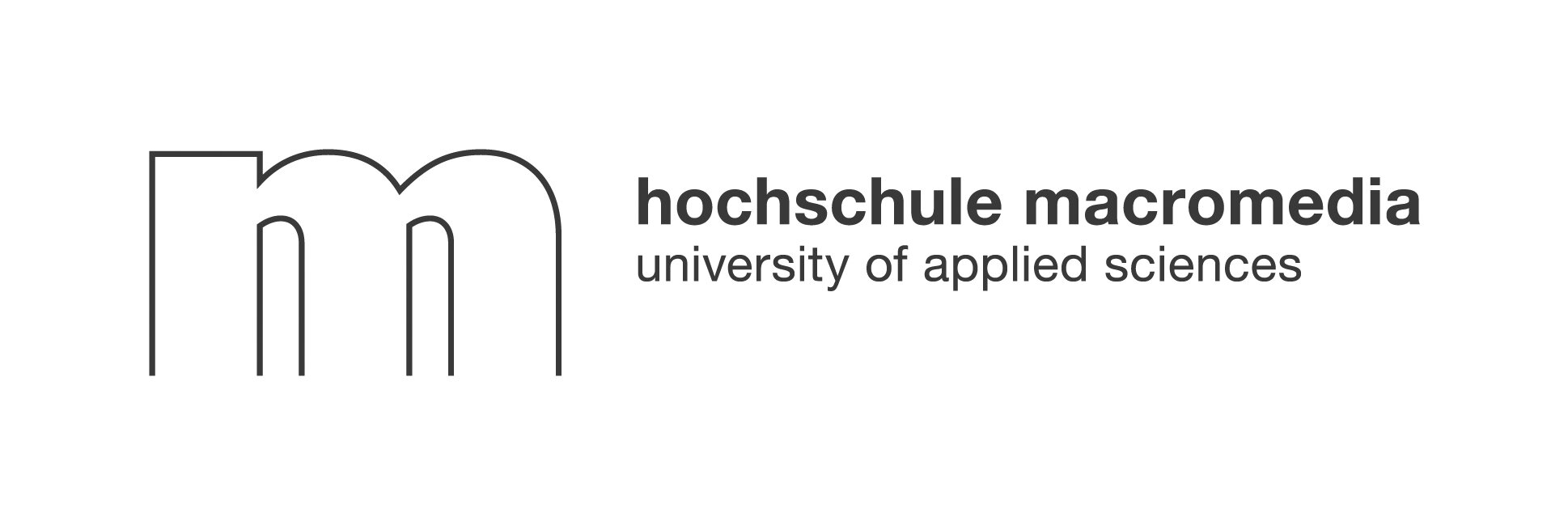Hybrid work is no longer a trend—it's the new foundation of modern business. Yet, even with the best tools for hybrid work, many organizations still struggle to create a sense of belonging and true collaboration across distributed teams. Why do some companies thrive in this new environment, while others face disengagement and fractured cultures? The answer lies not just in choosing the right software, but in reimagining how technology can foster authentic, organic connections between people. This guide explores the essential hybrid workplace tools of 2025 and reveals how AI-driven collaboration platforms like Neroia are revolutionizing employee engagement, breaking down silos, and making hybrid work truly work.
Why Hybrid Teams Rely on the Right Tech Stack
The hybrid workplace model blends in-office and remote work, offering flexibility that most employees now expect. According to a recent Gallup survey, 80% of U.S. employees work hybrid or fully remote, with over half preferring hybrid arrangements. But this flexibility can come at a cost: communication breakdowns, fragmented workflows, and a sense of isolation.
The right tech stack is the backbone of a successful hybrid team. It ensures seamless communication, transparent project management, and equitable access to resources—no matter where team members are located. However, technology alone isn't enough. The tools must work together, integrate with existing workflows, and address the human side of work: connection, culture, and engagement.
"Smart communication technology can speed up employee productivity, helping employees to communicate more efficiently and tick off tasks faster to improve business outcomes. It can even strengthen workplace bonds through a sharing platform."
— Sandra Moran, CMO, WorkForce Software
Must-Have Categories of Tools for Hybrid Work

A complete hybrid work toolkit covers more than just video calls and chat. Here are the must-have categories, each solving a unique challenge in the hybrid environment.
Communication & Chat Platforms
Fast, clear communication is essential for hybrid teams. Platforms like Slack and Microsoft Teams centralize messages, organize conversations by channel, and support both real-time and asynchronous updates. These hybrid workplace tools integrate with calendars, project management apps, and file storage, keeping everyone aligned and reducing email overload.
Video Conferencing and Hybrid Meetings
Face-to-face time matters, even through a screen. Zoom, Google Meet, and Microsoft Teams provide reliable video conferencing, screen sharing, breakout rooms, and live captions. The best tools ensure all participants—remote or in-office—have equal footing, with features like interactive polls and virtual whiteboards.
Project and Task Management Suites
Hybrid work requires clear visibility into tasks and deadlines. Tools like Asana, ClickUp, Jira, and Quire let teams plan projects, assign responsibilities, track progress, and automate routine workflows. Integration with communication platforms ensures updates flow seamlessly, minimizing context-switching.
Documentation & Knowledge Sharing Hubs
Shared knowledge is the glue of distributed teams. Platforms such as Google Workspace, Confluence, and Notion serve as digital wikis, storing documents, policies, and best practices in a searchable, collaborative space. Real-time editing and version history prevent confusion and keep everyone on the same page.
Office Space and Desk Booking Software
Managing physical space is tricky when attendance fluctuates. Solutions like Envoy, Comeen, and deskbird enable employees to book desks, meeting rooms, and resources in advance. These tools optimize office usage, support health protocols, and help organizations adapt real estate to changing needs.
Culture, Engagement & Well-being Apps
Traditional engagement tools—like static surveys or generic team-building events—often fall short in hybrid settings. New platforms, such as Neroia, use AI to recommend small-group activities (think yoga sessions or cycling meetups) tailored to individual interests and schedules. These employee engagement solutions foster authentic connections and boost well-being, even for those rarely in the office.
Security and Compliance Solutions
Hybrid work expands the security perimeter. Tools like Okta, Duo Security, and built-in platform controls ensure secure access, data encryption, and compliance with privacy standards. Role-based permissions and audit trails are now essential features of any hybrid workplace tool.
Tool Selection Criteria: How to Evaluate Options
With so many tools for hybrid work available, how do you choose the best fit? Focus on these four criteria to build a tech stack that empowers your team and protects your organization.
Integrations and Ecosystem Fit
Hybrid teams use a mix of platforms. Prioritize tools that integrate smoothly with your existing stack—such as Slack, Zoom, Google Workspace, and project management suites. Seamless integrations reduce friction, keep data flowing, and make adoption easier for everyone.
User Experience & Accessibility
The best hybrid workplace tools are intuitive, mobile-friendly, and require minimal training. Look for clear interfaces, accessibility features (like captions and screen readers), and support for multiple languages. Tools that are easy to use see higher adoption and greater ROI.
Scalability, Pricing and ROI
Your needs may change as your company grows. Choose tools that can scale—adding users, features, or integrations as needed. Transparent pricing, flexible licensing, and clear metrics for measuring ROI are crucial for long-term success.
Data Protection & Privacy Standards
Hybrid work means more data in more places. Ensure every tool complies with industry standards (like GDPR or SOC 2), offers robust encryption, and provides granular access controls. Privacy is especially important for employee engagement solutions that handle sensitive information.
Common Pitfalls When Rolling Out Hybrid Tools—and How to Avoid Them
Rolling out new tools for hybrid work isn't always smooth sailing. Here are common pitfalls and how to sidestep them:
- Tech sprawl: Too many disconnected apps create confusion and data silos. Solution: Consolidate platforms and prioritize integrations.
- Low adoption: If tools are hard to use or don't fit workflows, employees won't use them. Solution: Involve users in selection and provide strong onboarding.
- Security gaps: Overlooking security features can expose sensitive data. Solution: Set clear policies, train teams, and choose tools with robust protections.
- Neglecting culture: Tools alone can’t build culture. Solution: Pair technology with intentional efforts to foster connection and engagement.
"Your tech stack shouldn’t be a battlefield of siloed tools, but a harmonious orchestra where every instrument plays its part."
— Officespace Software Blog
Step-by-Step Plan to Implement Your Hybrid Tool Stack
A structured approach ensures your hybrid work tools deliver real value. Here’s how to do it:
Audit Current Workflows and Pain Points
Start by mapping out how your team works today. Identify bottlenecks, redundant tools, and communication gaps. Survey employees to understand their needs and frustrations.
Pilot, Iterate and Gather Feedback
Select a small group to test new tools. Collect feedback on usability, integration, and impact on workflows. Iterate based on real-world experience before wider rollout.
Team Training and Ongoing Support
Provide clear, concise training—think video tutorials, FAQs, and live Q&A sessions. Assign tool champions within teams and ensure ongoing support is available.
Measure Adoption, Productivity and ROI
Track usage metrics, productivity improvements, and employee satisfaction. Use analytics from your hybrid workplace tools to guide further improvements and demonstrate ROI.
Ordered List: Hybrid Tool Implementation Steps
- Audit workflows and gather employee input.
- Select and pilot new tools with a small group.
- Collect feedback and refine tool selection.
- Roll out tools company-wide with training.
- Monitor adoption, productivity, and satisfaction.
Case Studies: Companies Getting Hybrid Tooling Right
Forward-thinking companies blend robust hybrid workplace tools with a human-centered approach. For example, a global SaaS provider integrated Asana, Slack, and Zoom to streamline communication and project management, while using deskbird for flexible workspace booking. However, they noticed that traditional engagement platforms failed to address hybrid isolation.
Enter Neroia: By piloting Neroia's AI-driven platform, the company introduced micro-events like yoga sessions and running clubs, curated by AI to match employee interests and schedules. Participation surged, and anonymized analytics revealed improved cross-team connections and higher reported well-being. The result? Not just increased productivity, but a more vibrant, connected culture.
"Neroia’s platform helped our hybrid teams effortlessly discover shared interests, leading to authentic connections that simply weren’t possible with old-school engagement tools."
— HR Leader, OHB Pilot Program
Future Trends: Where Hybrid Work Tools Are Heading by 2030

Looking ahead, the future of hybrid work is even more dynamic and personalized. AI-driven collaboration platforms will become the norm, automatically curating micro-events and recommending connections based on real-time data. Integration between employee engagement solutions and core productivity tools will deepen, creating seamless workflows that blend work, well-being, and culture.
Expect to see:
- Hyper-personalization: AI will tailor activity suggestions, learning paths, and even workspace preferences to each employee.
- Seamless integration: Tools for hybrid work will connect effortlessly, reducing friction and context-switching.
- Focus on well-being: Platforms like Neroia will take center stage, using anonymized analytics to support mental health, inclusion, and organic team building.
- Inclusive collaboration: New features will ensure every voice is heard, regardless of location or role.
"Hybrid work technology is the catalyst for workplace agility. It’s about equipping both in-office and remote employees with the digital and physical resources they need to thrive in this blended environment."
— Officespace Software Blog
How Neroia Revolutionizes Hybrid Work: Beyond Traditional Tools
Traditional company-organized engagement tools often fall short in hybrid environments. They rely on scheduled, top-down events or generic surveys, which can feel forced, impersonal, and disconnected from daily workflows. These fragmented platforms rarely address hybrid isolation, leaving remote workers out of the loop and missing the spontaneous interactions that build real culture.
Neroia changes the game by leveraging AI to curate micro-events—small group activities like yoga sessions, cycling meetups, or cultural exchanges—tailored to each employee's interests, location, and schedule. Unlike one-size-fits-all solutions, Neroia’s platform integrates with essential hybrid work tools (Zoom, Slack, Asana), orchestrating seamless coordination and communication. For example, during the OHB pilot, employees effortlessly discovered company runs and lunchtime yoga sessions, all managed by AI chat and protected by anonymized analytics.
By connecting with existing collaboration platforms, Neroia breaks down silos and fosters authentic, informal interactions. Employees can join activities with just a click, whether they’re in the office or remote. HR teams benefit from actionable insights into engagement and well-being, without compromising privacy.
Key benefits of Neroia’s AI-driven collaboration platform:
- Effortless discovery: Employees find relevant micro-events based on their interests and availability.
- Inclusive engagement: Small group activities make it easy for everyone to participate, reducing hybrid isolation.
- Seamless integration: Works alongside Zoom, Slack, Asana, ClickUp, and workspace management tools.
- Privacy-first analytics: All data is anonymized, supporting employee-centricity and trust.
- Boosted productivity and culture: Real connections drive collaboration, creativity, and retention.
"Neroia’s AI platform is not just another tool—it’s the missing link that ties together hybrid workplace tools, organic engagement, and a thriving, inclusive culture."
— Employee, OHB Pilot Program
Why Traditional Tools Fail in Hybrid Environments
- Fragmented platforms create data silos and confusion.
- Generic events lack personalization and often exclude remote workers.
- Poor integration with collaboration and project management tools.
- Limited support for spontaneous, organic connections.
- Failure to address hybrid isolation and well-being.
How Neroia Enhances Hybrid Work
- AI-curated micro-events foster authentic, informal connections.
- Integrates with core hybrid workplace tools for seamless workflows.
- Supports both in-office and remote employees equally.
- Provides anonymized analytics for HR without compromising privacy.
- Encourages a culture of inclusion, well-being, and continuous engagement.
In 2025, thriving in a hybrid work world means more than just adopting the latest tools for hybrid work. It requires a holistic approach that connects technology, people, and culture. Platforms like Neroia are leading the way, transforming employee engagement from a checkbox to a living, breathing part of everyday work. By integrating AI-driven collaboration platforms with your hybrid workplace tools, you can break silos, foster real belonging, and unlock the full potential of your team—wherever they are.
Ready to revolutionize your hybrid work experience? Discover how Neroia’s AI-driven platform can seamlessly enhance your existing hybrid workplace tools and empower your people to effortlessly discover authentic connections, every day.




